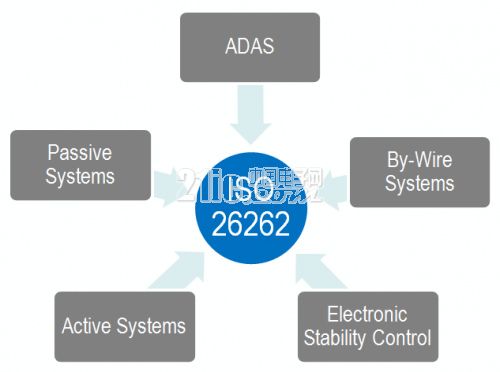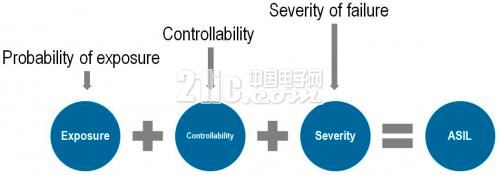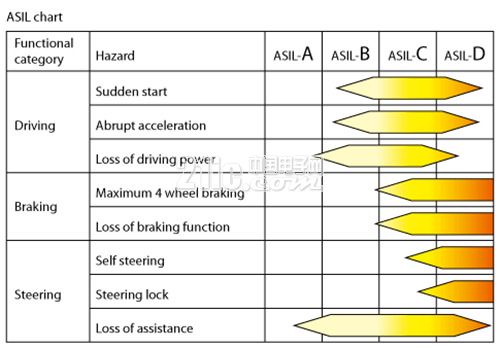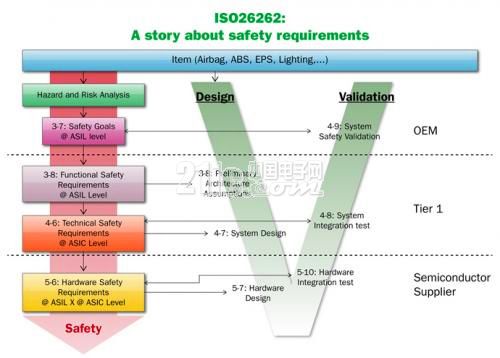If you're concerned about ISO 26262, you might already know that even IP or EDA tools developed with the highest quality standards may not automatically pass ISO 26262 certification. Kurt Schuler, Vice President of Marketing at Arteris, is actively involved in several technical committees related to ISO 26262. He explains that in the development of automotive electronic systems, IP and EDA tool vendors have multiple strategies to enhance safety and meet the requirements of this critical standard. Let’s explore these insights with the car electronics editor.
One of the key aspects for IP and EDA tools is setting the right application scenario. In the past, when devices were less programmable, it was easier to define how each component in a system would operate. However, today, 99.9% of the security elements defined by IP and tool vendors are independent of specific application scenarios. This means they must be designed to work across a wide range of use cases, making it impossible to optimize only for one particular situation.

The concept of Automotive Safety Integrity Levels (ASIL) introduces a framework for defining safety based on the application context. Even if two controller chips are identical, their safety certification requirements can vary significantly depending on their use case. For example, a controller chip used in seat position adjustment has much lower safety demands compared to one used in an autonomous driving system.

ASIL levels are determined based on the hazard potential of each subsystem. ASIL C and D are typically applied to scenarios where there is a risk of serious injury or death, while ASIL A applies to less critical functions like seat adjustments. ASIL essentially measures the severity, likelihood, and controllability of an event. Kurt gives the example of cruise control: if it fails, the driver can still take manual control. Similarly, if an advanced autopilot system fails, the car should transition back to manual mode when the driver turns the steering wheel. This transition must happen within very strict time constraints, requiring both the driver's reaction and the system's recovery time to be carefully managed.

Adding certain features to IP or software can significantly improve the functional safety of electronic components. According to Kurt, Arteris focuses on enhancing on-chip communication by integrating a communication integrity checker. This built-in detector continuously monitors the system during operation to prevent malfunctions. Moreover, the detector itself must also be monitored, which is why Arteris includes a fault handling mechanism within its solution.
The core of functional safety for IP products lies in diagnostic coverage. Kurt emphasizes that IP vendors need to make it easier for customers to assess the diagnostic coverage of their IP. Failure Mode, Effect, and Diagnostic Analysis (FMEDA) is becoming increasingly important, as IP products must account for various unexpected conditions such as stuck bits or power transients. Any unforeseen issue at the IP level must be identified so that appropriate measures can be taken at the system level.
According to ISO 26262, certified systems must maintain traceability and support for more than ten years, which places significant new demands on system design data preparation and maintenance. During system maintenance and traceability, vendors must provide a complete toolchain for regenerating, analyzing, or modifying designs. The main requirement from ISO 26262 for IP is thorough documentation. IP vendors should give system engineers enough information to help them achieve full compliance with the standard.

There's no doubt that the ISO 26262 standard is being adopted across the entire semiconductor industry chain. This effort is preparing for the future of fully autonomous vehicles. When there is no human driver to take over, every layer of the vehicle—from the hardware to the software—must be developed with reliability and safety in mind.
In summary, entering the automotive market requires IP and EDA tool manufacturers to align with the ISO 26262 standard. By focusing on application scenarios, enhancing diagnostic coverage, ensuring long-term traceability, and providing detailed documentation, vendors can successfully meet the rigorous safety requirements of the automotive industry. If you want to learn more about this topic, stay tuned for more in-depth and up-to-date information from electronic engineering experts.
Realpoo Optics offer various accessories for Laser Module. We have power supply, power cable, bracket, laser protective googles and others.
We have a lot of inventory, so the order can be sent very soon. MOQ 1pcs is welcome.
For power supply, we have EU standard, US standard, AU standard, RU standard.
About laser module bracket, we have different aperture to fit different laser module.
Power Adapter,Mounting Bracket,Power Switch,Europe Power Adapter
Changchun Realpoo Photoelectric Co., Ltd. , https://www.optics-realpoo.com